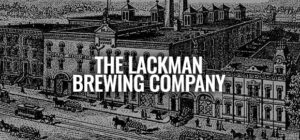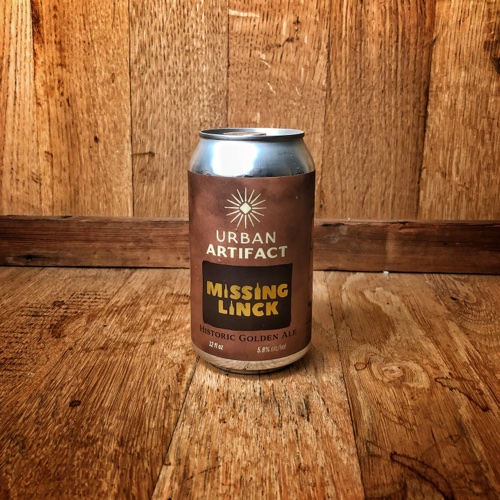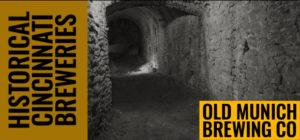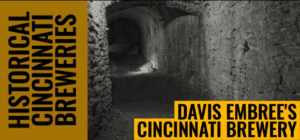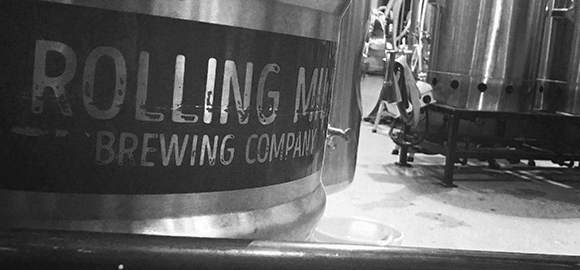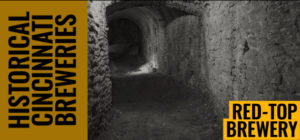We are a beer city.
Despite all the ups and downs that we’ve faced, you can still see the pieces of our beer history, and the clear signs of its future in the very soul of who Cincinnati is today. It’s not hard to trace it all back to the early 1800s when, though German immigrants weren’t the first to make beer on the shores of the Ohio River, they certainly put their stamp on it very quickly and help steer us on a path.
These immigrants started settling in a neighborhood just north of the city, across its canal in an area that became lovingly called “Over The Rhine”. At the time, when you crossed the bridges over the canal, it felt like crossing back into Germany – German was spoken more than English was, newspapers were published in German and beer was brewed just as it was back home. Lager beer was brought over from Germany, and massive tunnels were carved beneath our streets and into our hills to age the difficult style of beer. The area was home to more stories of “The American Dream” than you could put into writing easily… Germans venturing across the Atlantic Ocean with nothing to their name, and becoming some of the most influential people in Cincinnati, building massive breweries that employed thousands of people.
Beer became big business in Cincinnati… We were drinkers from the get-go. The city earned its nickname as the “Beer capital of the world” by brewing far more beer than we can easily imagine, today. And we drank a lot of it, right here. There are records of us drinking more than 40 gallons of beer for every single man, woman, and child in the city. That’s more than 2 1/2 times what the national average was. The city was packed full of breweries, saloons, and beer gardens, the culture of beer was in every aspect of life for people in Cincinnati. The names of the breweries of the time were so ingrained in life that they still echo with power today – Christian Moerlein, Louis Hudepohl, John Hauck, George Wiedemann, there was the Lion Brewery and Bavarians, among many others.
We were a beer city of the highest regard.
But then there was tragedy. Prohibition. The “Great Experiment”. Drinking culture kept building and building before anti-drinking sentiment set in full force across the United States. Laws started being passed (and then ignored in Cincinnati) until all hell broke loose in 1918 when it finally became illegal to produce alcohol.
Cincinnatians were overwhelmingly against the amendment, and it sure didn’t stop them from drinking, but the effect it had on the brewing industry was undeniable. Entire industries that relied on Cincinnati’s breweries suffered, not to mention the very lifestyle of the working class in Cincy. Tax money was lost…things looked bleak.
Some of our breweries tried to survive by brewing illegally…there were raids against several Cincinnati breweries – with the most famous being Wiedemann after they were tied in with infamous bootlegger George Remus.
Schaller’s and Mohawk also attempted to brew in secret before they were raided. Cincinnati kept fighting for its identity, though. Enough illegal beer was being made in bootlegging and home brewing operations that both Red Top and Burger (then malt companies) were able to stay in business.
Finally, 13 years after it stopped Prohibition was deemed a failure by the masses and it ended a dark time in history. Only one of our breweries (Bruckmann) was able to begin production immediately after surviving on “Near Beer” during prohibition, but several others were able to start back up soon after. In addition to Bruckmann, Hudepohl, Foss-Schneider, Wiedemann, Schaller, and Bavarians were able to start production back up. The years right after were tough… The competition was fierce and there were several closures and openings that left the city with five breweries to carry on its tradition of beer into an era of changing tastes.
Bavarian’s, Burger, Hudepohl, Schoenling, and Wiedemann were forced now to compete with “Big Beer”. Breweries with advertising budgets that dwarfed their own. People wanted cheap beer available at the grocery store, unlike the saloon of pre-prohibition Cincinnati. The changing face of beer continued to be felt until “Big Beer” was outselling our local beer more than 10-1.
The writing was on the wall, and one by one our breweries closed or were sold off until the last remaining piece closed in the 90s leaving this city without the very soul that brought it to life in the first place.
We were a beer city without any beer.
At the same time, across the country, a new movement started happening. A small number of drinkers knew that there was something else out there, and from scratch, they started building the craft beer movement that we are all so familiar with today. Soon enough, microbreweries started popping up in the Queen City. Rock Bottom, Barrelhouse, Brew Works, Main Street Brewing, Oldenberg… It was a new movement built upon an idea that had been here the whole time. Beer made here, drank here.
Cincinnati has been a little behind the quick growth of craft breweries, but things are building massive momentum very quickly here now. We now sit in a city that is home to more than (depending on who you ask) 65 different breweries making some of the best beer you can find. Our brewing community is filled with some of the most genuine people doing things for the best reasons you can imagine. These are families, friends, and neighbors brewing beer on systems ranging from .25 barrels to 100 bbls. In many ways, you can look at the beer community of today’s Cincinnati as more well-rounded and exciting than anything that this city has seen in the past.
It’s an excellent time to be a drinker.
If the ghosts of beer barons of Cincinnati’s past were to look into what we have going on today, I think they’d be proud. They’d pull up a stool in any of our local breweries, drink a few pints, and happily sing the praises of Cincinnati.


